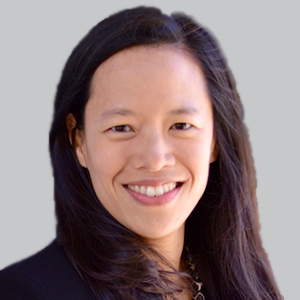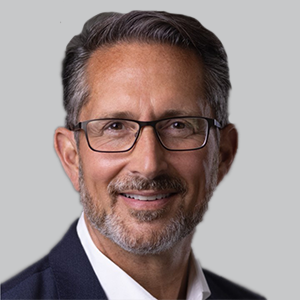Article
NeurologyLive® Year in Review 2021: Top Video Interviews
Author(s):
Take a look back at some of the most top video interviews with key experts in neurology and their insights and perspectives on topics in neurology subspecialties, as part of NeurologyLive®'s Year in Review.

In 2021, the NeurologyLive® team spoke with hundreds of physicians, clinicians, nurse practitioners, physical therapists, rehab specialists, and more to bring you the perspectives of experts in the field on the topics that inform and affect the clinical care of patients with neurologic disease.
These conversations covered topics from all areas of neurology, bringing key opinion leaders insight directly to you as they offer their takes on the latest news, developments, and data around the clinical care of patients and research. These include experts in the fields of dementia and Alzheimer disease, epilepsy, headache and migraine, movement disorders, multiple sclerosis, neuromuscular disorders, sleep disorders, and stroke and cerebrovascular disease.
Take a look back on some of the most engaging and most-watched video interviews in 2021 by clicking the buttons below:
Clinicians’ Role in Addressing the Neurologist Shortage: Jennifer Majersik, MD, MS
WATCH TIME: 2 minutes
The division chief of vascular neurology at the University of Utah discussed the individual role that clinicians and neurologists can play to increase interest in the field of neurology. Majersik further commented on the importance of informing patients about the shortage of neurologists, as they too play a vital role in raising awareness, particularly through patient advocacy groups.

Advantages of Atogepant in Ever-Growing CGRP Market: Lawrence Severt, MD, PhD
WATCH TIME: 6 minutes
The director at AbbVie highlighted where atogepant stands among the increasing treatment landscape of anti-calcitonin gene-related peptide (CGRP) options within the migraine treatment landscape. He spoke about the growth of the CGRP treatment market and the mechanistic benefits they bring as well as harps on the advantages atogepant could bring to the landscape pending continued regulatory success.

Integrating Advanced Practice Clinicians Into Neurology: Calli L. Cook, NP, DNP
WATCH TIME: 3 minutes
The nurse practitioner at the Woodruff School of Nursing at Emory University detailed why a cultural shift is needed to incorporate APCs into the neurology space and thus improve multidisciplinary care. Cook detailed the multilevel effort it must take to incorporate APCs into common multidisciplinary neurology care and stressed that this is a culture change that should be first recognized by clinical administrators, and then passed down through education.

Nerve Blocks for the Treatment of COVID-19 Headache: Aarushi Suneja, MD
WATCH TIME: 2 minutes
The headache fellow at Cleveland Clinic outlined the design and reasoning for a new study assessing nerve blocks to treat COVID-19 headache, as well as provided detail on how she and her colleagues plan to carry it out. She also noted that they plan to characterize demographic data, headache descriptors, and comorbidities of this cohort to aid in formal diagnostic criteria in the future.

Assessing High-Intensity Exercise to Prevent Alzheimer Disease: Stephen Rao, PhD; Jay Alberts, PhD
WATCH TIME: 6 minutes
The duo of researchers from Cleveland Clinic outlined their new 5-year study that tests home-based intervention in high-risk individuals for Alzheimer disease. They provide a background of how the study will be conducted, how it differs from other previous exercise-based research projects, and the long-term goals they are looking to complete.

The Numerous Needs for Parkinson Disease: Rodolfo Savica, MD, PhD
WATCH TIME: 5 minutes
The consultant in the Department of Neurology at Mayo Clinic discussed the mounting number of unmet needs for patients with Parkinson disease, providing an overall background on the multitude of quality of life issues this patient group faces and which research efforts are needed to address these symptoms. He noted that communication between patients and their neurologists is crucial to try to alleviate the symptoms they are experiencing

Nipocalimab Shows Promise as Myasthenia Gravis Treatment: Jeffrey Guptill, MD, MS, MHS
WATCH TIME: 2 minutes
The associate professor of neurology and neurologist at Duke University discussed the positive results of nipocalimab, a monoclonal antibody, in patients with myasthenia gravis. He discussed some of the top-level findings and their significance to the clinical community, and how the results open the door to future studies involving nipocalimab.

New AASM Guideline, Improved Awareness of Sleep Disorders: Lynn Marie Trotti, MD, MSc
WATCH TIME: 4 minutes
The professor of neurology at Emory University School of Medicine spoke on the potential for the new AASM hypersomnolence guideline to educate providers treating patients with sleep disorders. New protocol recommendations for the Multiple Sleep Latency Test and Maintenance of Wakefulness Test are also on the horizon from AASM for patients with central disorders of hypersomnolence, she said.














